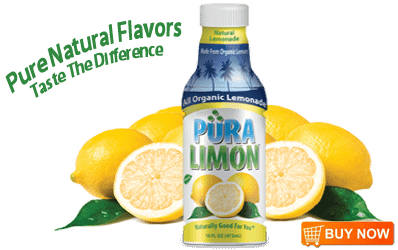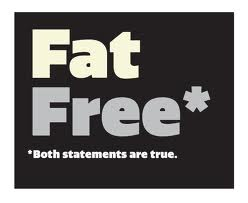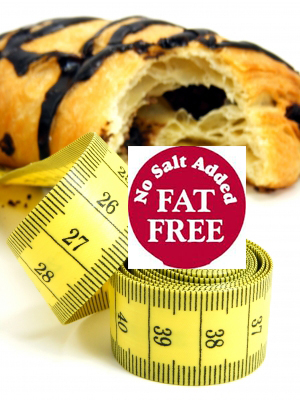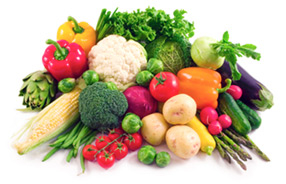Recently I discovered I Needed a Lesson in Labels.
Most of us have become so used to buying food with fancy labels and packaging that we can hardly imagine purchasing a food that doesn’t come with an ingredients list, heating and cooking and storage instructions, cautions about containing traces of nuts or allergens, disclaimers and marketing hype about how much better this product is for you than a dozen other similar products on the supermarket shelves.
Don’t get me wrong, some labelling is useful. Statements about fat, protein, carbs, sodium and calorie content – helpful.
Labels containing marketing hype, twisting the truth about a product to disguise what’s really inside the tin, bottle or jar – less helpful.
Getting Beyond the Hype
According to Food Expert, Pat Thomas, smart shoppers ignore the hype on the front packaging. This part of the label is designed by the company’s marketing and advertising departments to do whatever is necessary to make us buy it. While certain manufacturers do not necessarily lie on their food packaging, they are ingeniously clever at twisting the truth of their messages.
Some Classic Terms to Watch Out For (with their true meaning):
Pure – While “Pure” sounds all well and good, the word “pure” has no regulated, agreed -upon meaning in food labelling. It tells you nothing about what’s in the product, that is not healthy. The packaging of most ready-made foods can leak chemicals such as adhesives, polyvinyls and hormone-disrupting bisphenol A and phthalates into “pure” food.
Natural – Once again, there is no agreed-upon legal definition of ‘natural”in the food business. While it sounds appealing, the word says little about the nutritional quality of the food, or even its safety.”Natural” is not the same as nutritious. The “natural flavours”included in many processed foods are, almost without exception, formulated in a lab to be “natural identical”. They contain nothing that the average person would require in a natural diet; instead they’re derived from a range of neurotoxic and carcinogenic chemicals that shouldn’t be in any diet.
Studies have shown our bodies were designed to function best on real food (food that’s green and grows out of the ground), not synthetic imitations containing a host of petroleum, coal tar and rocks. You wouldn’t put ground up rocks in your vehicle’s engine, so why then do people put artificial foods and supplements in their body?
Made From – Simply refers to the starting material. For example, the claim “made from 100% vegetable oil” sounds great, but it may be misleading. This simply means that the manufacturer started with a natural 
“Made with real fruit” – Another classic, particularly prevalent in snacks for children. Sadly, there is no law requiring labels to say how much real fruit is in the product. Often “real fruit” snacks contain more sugar, preservatives and artificial colouring than real fruit.
“Made with whole grains ” – Another labelling “white lie” that leads the consumer to believe they are buying healthy wholegrain (brown) cereal and bread. The package label is not required by law to say how much “whole grain”is in the product. So the main ingredient could be refined flour, with just a smidgen of wholegrain (whole wheat). This means the food won’t contain all the fibre and necessary nutrients that whole-grains provide.
“Fat Free”- Some intake of fat is necessary for health and we need a combination of both saturated and unsaturated fats in our diet each day. The dominant nutrients in fresh vegetables are mostly fat-soluble ones known as “carotenes’. These are powerful antioxidant and disease-fighting substances.

Fruit Drink – When the word “drink” appears on the label, it tells you that this is not 100% juice. A fruit “drink” may contain little or no real fruit juice. Look at the ingredients to find out what’s really in there.
What Would a Smart Shopper Do Now?
A few things.
Start by buying as much real food (i.e. green and grows) as possible from local markets. Not only is this food healthier for you and your family, it has less chance of being transported great distances to get to you, meaning it has less impact on the environment than mass-produced supermarket goods.
Then be aware of what you are putting in your body (it is a temple as they say). Garbage in leads to garbage out. Quality in, leads to optimal function and health.
Check the ingredients of all food labels. If it’s an acid or sounds like something from a Science experiment gone wrong, do we really want to be feeding it to our children?
Then question the food manufacturers. Ask them what ingredients their product contains and how it was made (simply google them to find their website and contact details)? At the least, this will make them realise theyhave to up their game, otherwise people will simply go elsewhere.
Feel free to include any other smart shopper tips below –
You might be interested in:
Body Image is a huge thing in today's society,...
Dr Bruce H Lipton, PhD & Dr Wayne Dyer d...
(Reading Time: 3 mins) Coconut Oil is one of the f...



